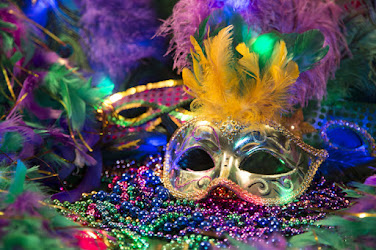Mardi Gras 2023

2023 is the year that we have seen people getting back to somewhat normal, parties are becoming full swing and with really no limitations of crowds and functions. It seems that we could finally see that we are getting away from Covid scares and living life once again. And one party that seems to get everyone’s attention is Mardi Gras and Carnival.
Mardi Gras is an occasion and famous social peculiarity that goes back millennia to agnostic spring and ripeness customs. Otherwise called Carnival or Carnaval, it's commended in numerous nations all over the planet — chiefly those with huge Roman Catholic populaces — on the day preceding the strict time of Loaned start. Brazil, Venice and New Orleans play host to a portion of the occasion's most popular public celebrations, drawing a large number of travellers and revellers consistently.
Mardi Gras is generally celebrated on "Fat Tuesday," the Tuesday before Debris Wednesday and the beginning of Loaned. In numerous areas, be that as it may, Mardi Gras has developed into seven days of lengthy celebration. Mardi Gras 2023 will fall on Tuesday, February 21. Following two years of dropped occasions because of the Coronavirus pandemic, festivals in New Orleans occurred in 2022. Mardi Gras is a custom that goes back millennia to agnostic festivals of spring and fruitfulness, including the rowdy Roman celebrations of Saturnalia and Lupercalia.
At the
point when Christianity showed up in Rome, strict pioneers chose to integrate
these famous nearby practices into the new confidence, a simpler undertaking
than cancelling them through and through. Subsequently, the overabundance and
intemperance of the Mardi Gras season turned into a preface to Loaned, the 40
days of fasting and repentance between Debris Wednesday and Easter Sunday.
Alongside Christianity, Mardi Gras spread from Rome to other European nations, including
France, Germany, Spain and Britain.
Mardi is the French word for Tuesday, and gras signifies "fat." In France, the day preceding Debris Wednesday came to be known as Mardi Gras, or "Fat Tuesday." Customarily, in the days paving the way to Loaned, merrymakers would gorge on every one of the rich, greasy food sources — meat, eggs, milk, fat and cheddar — that stayed in their homes, fully expecting half a month of eating just fish and various sorts of fasting. The word fair, one more typical name for the pre-Lenten celebrations, additionally gets from this devouring custom: in Archaic Latin, carnelevarium means to remove or eliminate meat, from the Latin carnem for meat.
The main American Mardi Gras occurred on Walk 3, 1699, when French adventurers Pierre Le Moyne d'Iberville and Sieur de Bienville arrived close to introduce day New Orleans, Louisiana. They held a little festival and named their arrival spot Point du Mardi Gras. In the many years that followed, New Orleans and other French settlements started denoting the occasion with road parties, concealed balls and extravagant meals. At the point when the Spanish assumed command over New Orleans, nonetheless, they cancelled these raucous ceremonies, and the boycotts stayed in force until Louisiana turned into a U.S. state in 1812.
On Mardi Gras in 1827, a gathering of understudies wore brilliant outfits and moved through the roads of New Orleans, copying the celebration they'd seen while visiting Paris. After a decade, the principal recorded New Orleans Mardi Gras march occurred, a custom that proceeds right up to the present day. In 1857, a mysterious society of New Orleans finance managers called the Mistick Krewe of Comus coordinated a light-lit Mardi Gras parade with walking groups and moving floats, establishing the vibe for future public festivals in the city. From that point forward, krewes have stayed an installation of the Festival scene all through Louisiana. Other enduring traditions incorporate tossing globules and different knickknacks, wearing veils, adorning floats and eating Ruler Cake.
Did you be aware? Rex, one of the most seasoned Mardi Gras krewes, has been partaking in marches beginning around 1872 and laid out purple, gold and green as the famous Mardi Gras tones. Louisiana is the main state wherein Mardi Gras is a lawful occasion. Nonetheless, elaborate fair merriments attract swarms of different pieces of the US during the Mardi Gras season too, including Alabama and Mississippi. Every district has its own occasions and customs.
Across the globe, pre-Lenten celebrations keep on occurring in numerous nations with critical Roman Catholic populaces. Brazil's week-long Fair celebrations highlight an energetic mixture of European, African and local practices. In Canada, Quebec City has the goliath Quebec Winter Festival. In Italy, sightseers run to Venice's Carnevale, which traces all the way back to the thirteenth 100 years and are renowned for its disguise balls. Known as Karneval, Fastnacht or Fasching, the German festival incorporates marches, ensemble balls and a practice that enables ladies to remove men's ties. For Denmark's Fastevlan, kids spruce up and assemble sweets likewise to Halloween — albeit the equal closures when they ceremonially beat their folks on Easter Sunday morning.



Comments
Post a Comment